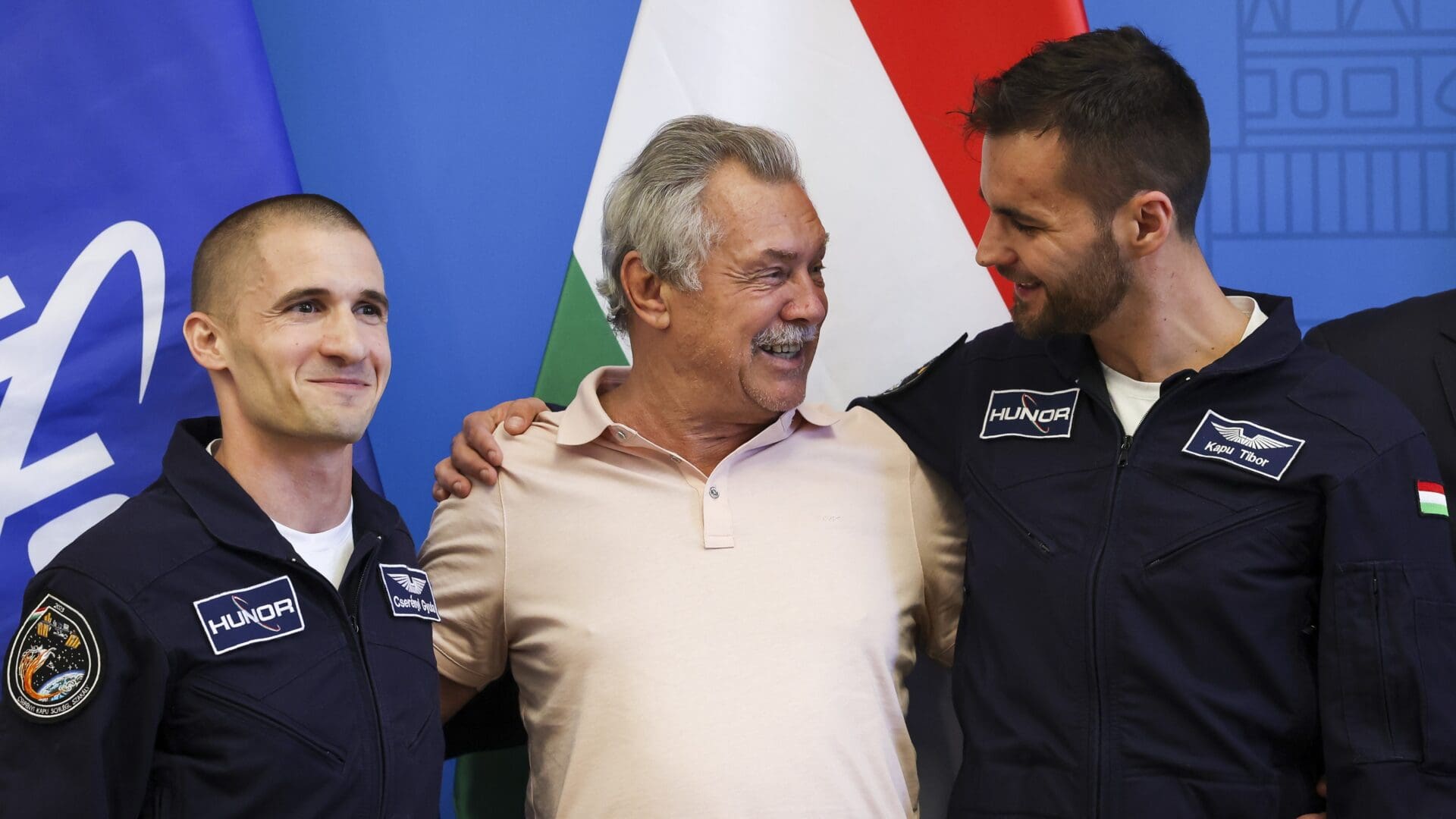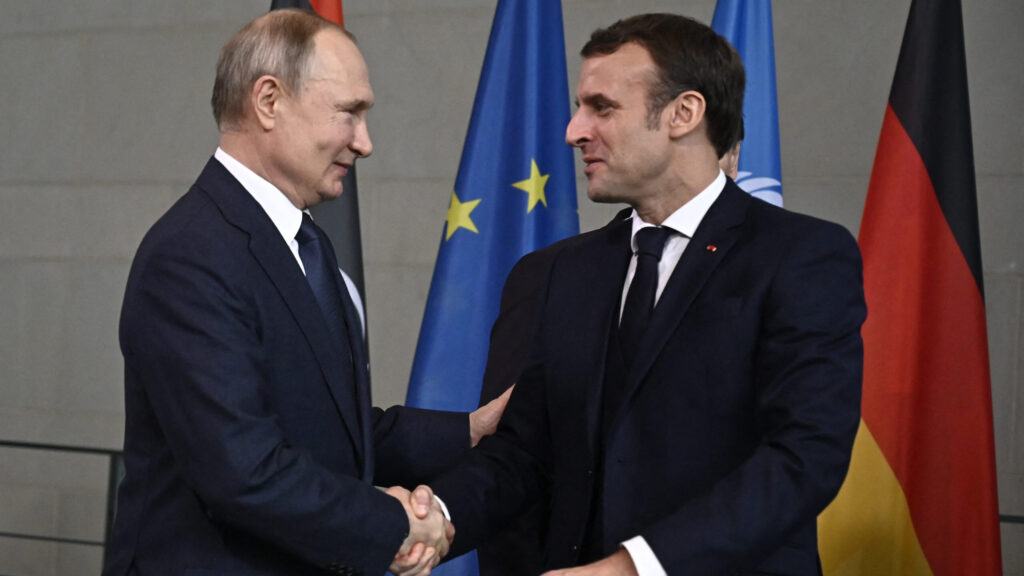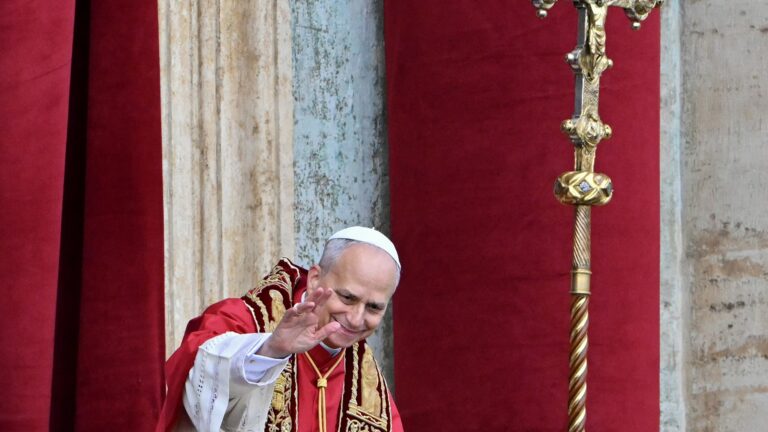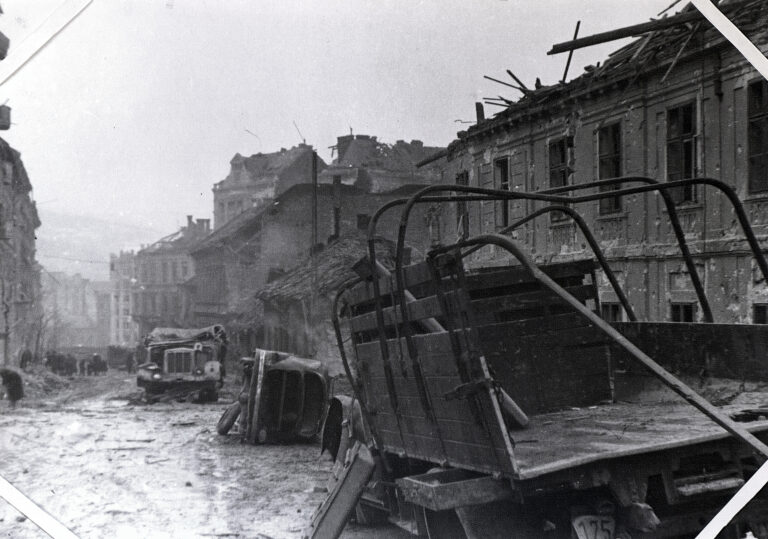Finally, the decision has been made—after 44 years of a huge pause in manned spaceflights, Hungary, the seventh nation to have sent a person into space, has selected the astronaut for its mission beyond the boundaries of Earth.
On Monday, 27 May Minister of Foreign Affairs and Trade Péter Szijjártó and Defence Minister Kristóf Szalay-Bobrovniczky announced that according to the decision made by a committee of professionals and experts Tibor Kapu has been chosen as the long-awaited astronaut of HUNOR, the Hungarian to Orbit program, together with his backup, Gyula Cserényi. Kapu is a 32-year-old mechanical engineer with a background in battery development in the automotive and space industry, whereas Cserényi is a 35-year-old electrical engineer by profession.

As Hungarian Conservative previously reported, the goal of the HUNOR programme is to send a Hungarian astronaut on a 30-day-long astronautic mission to the International Space Station to perform experiments crucial for the advancement of science, technological development and hence the Hungarian economy, including those that can be performed only in microgravity surroundings.
The mission, being prepared in cooperation with NASA, the European Space Agency, and Hungary’s partner from the US private space sector Axiom Space,
is a key to achieving the goals delineated in Hungary’s Space Strategy, a comprehensive and multifaceted governmental project to boost Hungary’s military, economic and technological capabilities via country’s participation in space activities.
Altogether, 240 Hungarian citizens of various engineering-, science- and military-related occupations had applied for the programme, and finally a short list of four applicants was drawn up: Gyula Cserényi, Tibor Kapu, Ádám Schlégl, a clinical orthopaedic surgeon, and András Szakály, a 40-year-old aerospace design engineer were included in the final round of selection. The candidates underwent comprehensive training from aircraft flying and simulating space surroundings to different physical endurance tests and were also engaged in scientific experiments. Moreover, they also familiarized themselves with the history of space exploration, the activities of space agencies, and the mission itself. Besides, they acquired invaluable insights into the scientific disciplines crucial for the success of the space journey, such as cosmology, rocket science and human physiology.

Albeit on Monday the public was informed that only Kapu and Cserényi have been selected as the astronauts for the programme, the other two candidates will nonetheless assist with the work of the HUNOR mission in leading positions on the staff of the mission’s ground-based control centre. As for Kapu and Cserényi, they will soon be sent to the United States, where they will undergo the final phase of their training, supervised and assisted by the US space agency NASA and the private company Axiom Space, Hungary’s international space exploration partners.
The announcement of the result of the selection process for the HUNOR mission, which is going to take place at the end of 2024 or in early 2025, was timed to coincide with the historic spaceflight of Bertalan Farkas, first Hungarian in space. In 1978, having by that time earned two degrees in a Hungarian and a Soviet aviation institute and risen to the title of Brigadier General, Farkas volunteered for the fifth international programme of Interkosmos, the space exploration programme of the Soviet Union and other countries in the Socialist bloc. Thanks to his academic and professional track record, as well as his fluent Russian, Farkas was chosen for the mission titled Soyuz 36 together with his Soviet counterpart, Valery Kubasov. After both intensely trained at the Yuri Gagarin Cosmonaut Training Centre in Star City near Moscow, on 26 May 1980 the spacecraft ascended to the skies with Farkas and Kubasov on board, and the Soyuz 36 mission commenced, with the goal of reaching one of the Soviet-made orbital space stations, Salyut 6.

Upong boarding the Salyut 6 station, Farkas, who was said to have adapted to the weightless conditions of space faster than Kubasov, together with his Soviet colleague commenced a series of Hungarian-planned scientific experiments, and they were so heavily immersed in their work that they had barely any time to rest. At times, the shortage of time was so pressing that they often devoted only three hours to sleep a day, fully dedicating themselves to their job of truly cosmic significance. After a week of conducting the experiments, dedicated to various scientific disciplines such as medicine, biology and physics, Farkas and Kubasov departed from the station and on 3 June 1980 landed on Earth southeast of Zhezkazgan in the Kazakh SSR. Up until to this day, barring Charles Simonyi, who flew to space as a space tourist and until the flight of Tibor Kapu and Gyula Cserényi happens,
Bertalan Farkas remains the only Hungarian who has ever ascended beyond the atmosphere.
Although—as it has always been the case with space—the mission had undoubtedly political purposes as well, such as demonstrating the unity and friendship between the members of the Socialist Warsaw Pact, its scientific achievements were beneficial for the whole world, regardless of any political allegiances. For the bravery, endurance and determination demonstrated during his seven-day-long space mission Bertalan Farkas was awarded the title Hero of the Soviet Union, and today his heroic deeds serve as one of the main foundations of Hungarian space research, including the foundations of the HUNOR mission itself. The latter is, without a doubt, the direct continuation of the internationally recognized and respected tradition of Hungarian space research, gloriously manifested in the flight of Bertalan Farkas, but having much deeper roots predating the beginning of the Space Age itself. HUNOR will carry the torch of this tradition into the future, which is invaluable for the future generations of Hungarian scientists, as well as its economic and industrial endeavours.







